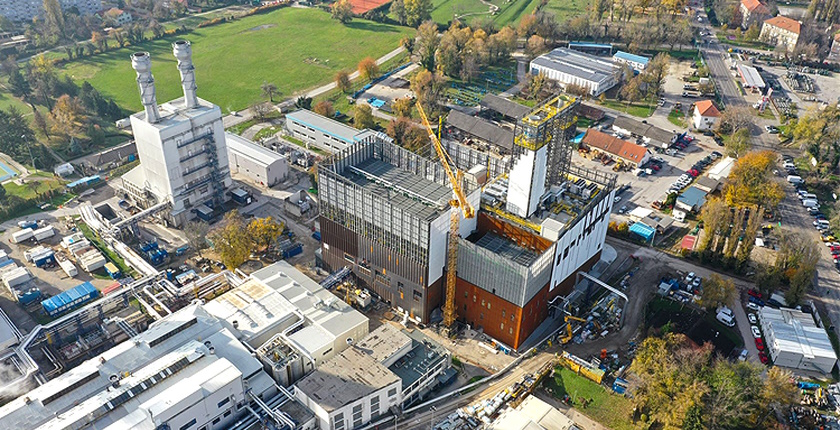
Photo: HEP
Croatian state-owned power utility Hrvatska Elektroprivreda (HEP) has started up a new high-efficiency unit at its cogeneration plant Elektrana-Toplana Zagreb (EL-TO Zagreb) in the country’s capital. The new unit, which cost EUR 140 million to build, has a capacity of 150 MW for electricity and 114 MW for heat.
The new unit at EL-TO Zagreb, which was announced as HEP’s largest investment in new generation capacities in the last ten years, will replace existing outdated units and reduce emissions of CO2, sulfur dioxide (SO2), nitrogen oxides, and particulate matter ( PM). Without the new unit, the capacity of cogeneration plant EL-TO Zagreb is 50 MW for electricity and 200 MW for heat.
HEP has successfully fired up the first gas turbine in the new high-efficiency combined heat and power unit, called Blok L, at EL-TO Zagreb, according to a statement from the company.
A trial run is planned for the spring of next year
It is the first key activity as part of the functional testing of the equipment and systems of the new facility, whose first phase will last until December 22. The first generator of Blok L is expected to be connected to the power grid next week, while its trial run is planned for the spring of next year.
Blok L will significantly improve the stability of the Croatian power system and increase the long-term security of heat supply to 80,000 inhabitants of the western part of Zagreb, as well as industrial steam supply to businesses.
Blok L, fueled exclusively by natural gas, will replace some of the obsolete units at EL-TO Zagreb and ensure a significant cut in emissions of CO2 and pollutants from the plant, according to HEP.
Emissions of SO2 will be slashed by 95%, nitrogen oxides by 57%, and particulate matter by 84%
The projected average output will help avoid the release of about 150,000 tons of CO2 per year, while the emissions of SO2 will be reduced by 95%, nitrogen oxides by 57%, and particulate matter (PM) by 84%.
This largest investment in new production capacities in the last ten years is important for HEP because it will include in the system a state-of-the-art high-efficiency facility for electricity and heat. It is also important for Croatia, because it will contribute to the country’s energy independence and economic growth, according to Frane Barbarić, president of the Management Board of HEP.
The new unit will enable a 25% cut in natural gas consumption
The expected average annual output at Blok L is 675 GWh of electricity, 450 GWh of heat for Zagreb’s district heating system, as well as 160 GWh of industrial steam, HEP stated.
The new unit, built by Italian company FATA, features Siemens technology with a 90% efficiency rate, which will reduce natural gas consumption by 25%.
The project was mostly financed by loans from the European Bank for Reconstruction and Development (EBRD) and commercial banks, as well as the European Investment Bank (EIB), with guarantees from the European Fund for Strategic Investments.


















Be the first one to comment on this article.